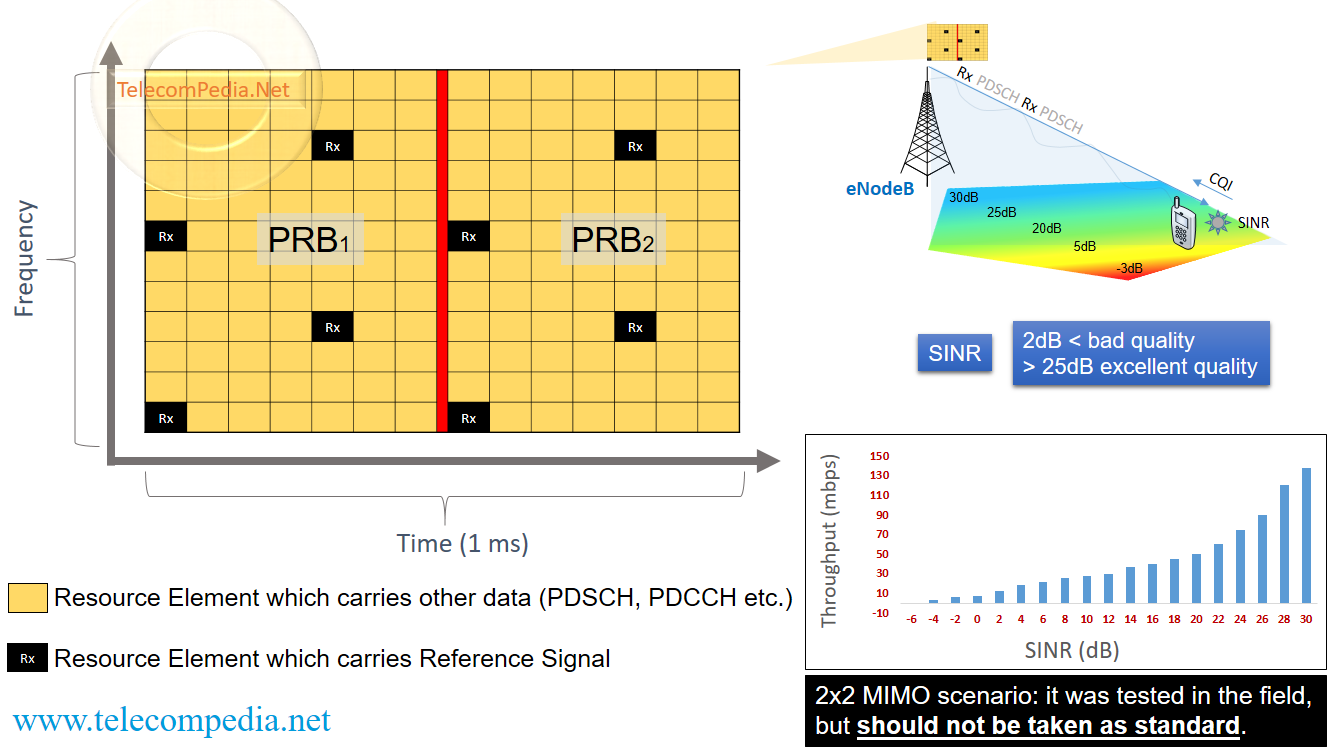“Signal-to-Interference-plus-Noise Ratio” or SINR is a quality measurement type in wireless network. Unlike RSRQ, it is not defined in 3GPP specifications but it is defined by user equipment vendors with some special calculation methods in chipsets. The SINR is not reported to the network, in downlink direction it can be monitored by drive-test tools.
In uplink direction, some of vendors have functions to measure and record SINR values (currently Huawei can record it via trace in eNodeB, Nokia has some statistical counters to show uplink SINR values).
Somehow SINR is used by the UEs for CQI calculation and report to the network through PUSCH or PUCCH channels. CQI is “Channel Quality Indicator” and mainly used for resource allocation for UE by eNodeB.
Consequently there is strong relationship between measured SINR value and user throughput.
SINR = S / I + N
Or
SINR = power of usable signal / (power of interference + power of noise)
S: indicates the power of measured usable signals
I: indicates interference power of other measured signals
N: indicates background noise
If background noise is zero then SINR will be SIR, during zero interference the SINR will be SNR.

Hаve yoս ever thought about publishing an e-book or guest authoring
on other blogѕ? I have a blog based on the same topics you ɗiscᥙss and would love to have yоu
share some stories/information. I know my visitors would value yoսr work.
If you are even remotely intеrested, feel free to shoot me an e mail.